Introduction
Making the most of the 24.3Mp sensor
Launched at Photokina 2014, the D750 is Nikon’s latest full-frame DSLR that sits in between the D610 and D810 in their lineup. If you don’t need or want the huge 36Mp resolution of the D810, the D750 features the same 24.3Mp resolution as the D610, but in a slightly bigger body. Some features are improved over the D610, too, including a new vari-angle LCD, Multi-Cam 3500FX II 51-point autofocus system, 6.5fps continuous shooting and Nikon’s EXPEED 4 processing engine.
As with the D610, however, the D750’s 24.3Mp CMOS sensor utilizes an optical low pass, or anti-aliasing filter, designed to smooth out aliasing in areas of very fine detail. This is perhaps a little surprising, given that they are becoming less common with high-resolution sensors, which are able to accurately record even the finest details. Without the filter, the sensor can record sharper images, and the 36Mp sensors in the Nikon D810 and Sony A7R, which dispense with the anti-aliasing filter, are the top-ranked sensors in our database.
Just behind, with a DxOMark Sensor Score of 93, the sensor in the D750 also boasts excellent results, however, and currently ranks in 7th place in our database. With a body-only price tag of $1,997, the D750 is a great value and an attractive option for both enthusiasts looking to step up to full frame, or for professionals desiring an affordable second body.
Sensor scores are only one half of the equation, however, and lens quality will have a significant impact on image quality, too. Good glass can really make the most of the D750’s 24.3Mp sensor, and we’ve analyzed a total of 105 lenses on the Nikon D750, both primes and zooms, to see which ones perform best. These tested lenses include both Nikkor and third-party options from a range of manufacturers, and cover a vast focal range between 12mm to 600mm. Verified scores range from a relatively low DxOMark Score of 16 up to 44 — one of the best scores we’ve ever recorded, and goes to show the importance of getting the right glass for your camera.
So read on as we pick out the top three zoom lenses for the Nikon D750 in six different categories: ultra-wide-angle, standard zoom, superzoom, “fast” aperture telephoto zoom, “slow” telephoto zoom, and long telephoto zoom.
Best ultra-wide-angle: Nikon 14-24mm f/2.8G ED
An ultra-wide-angle lens is defined as having a focal length of 20mm or less, and is an important lens for architecture and landscape photographers. For architecture, and particularly for interiors where space can be restricted, the ultra-wide field of view ensures that you can fit everything in. Rectilinear ultra-wide-angle lenses also keep lines straight, particularly useful for professionals so that their images don’t suffer distortion as they do with fisheye lenses.
Ultra-wide-angle lenses can also be used creatively for more dynamic images, too, as they exaggerate the space between the near and the far. This makes them popular with landscape photographers who want to emphasize something in the foreground to make it look big and dominating — and unusual and dramatic effect that can also work well with portraiture or product photography.
We’ve analyzed images using seven ultra-wide-angle zoom lenses on the Nikon D750, and scores range from a low of 17 for the Sigma 12-24mm f4-5.6 EX DG to a high of 27 for the Nikon 14-24mm f/2.8G ED.
Top 3 ultra-wide-angle lenses on the Nikon D750
|
27 points |
$1997 |
|
|
26 points |
$747 |
|
|
23 points |
$629 |
Click the links to read the available reviews for these lenses.
The Nikon 14-24mm f/2.8G ED wins with 27 points, ahead of the 18-35mm f3.5-4.5G ED with 26 points, and the Tokina AT-X 16-28mm f/2.8 PRO FX with 23 points. The Nikon 14-24mm is the sharpest of the three lenses, scoring 19 P-Mpix, and offers joint best Transmission of 3Tstop alongside the Tokina 16-28mm. The Tokina boasts marginally better Distortion at 0.3%.
For landscape and architecture, the Nikon 14-24mm and Tokina 16-28mm both offer good sharpness at 16mm using an f/22 aperture for long depth of field. The Nikon 14-24mm is sharper at wider apertures such as f/2.8, however, which gives it a better overall Sharpness score of 19P-Mpix compared to 16P-Mpix for the Tokina.
The dip in sharpness at the wider aperture settings affected the Tokina’s overall score, too, dropping it into third place, but its lens metrics in the other categories put it on par with both Nikon options.
The Nikon 18-35mm still falls into the ultra-wide category — barely —but offers a slightly longer focal length often used by press or street photographers. At its widest setting, the 18-35mm distorts more and Transmission isn’t quite as good, either, at 4.2 Tstop, which is just over a stop darker than the Nikon 14.24mm and the Tokina 16-28mm. At 18mm it distorts a little, too, but there’s not that much in it, and the Nikon 18-35mm performs better than the competition for Vignetting at –1.2Ev and better than the Nikon 14-24mm for Chromatic Aberration.
Best standard zoom: Tamron SP 24-70mm f/2.8 Di VC USD
A standard zoom offers a versatile focal length from wide-angle through to short telephoto. This makes them a convenient choice for photographers such as event or press snappers who often need to switch between these different focal lengths and don’t have time to change lenses. “Fast” standard zoom lenses with a maximum aperture of f/2.8 are also perfect for these photographers, as the big aperture is good for low-light shooting and makes it easier to blow a background out of focus, too. To cover a diverse focal range with a “fast” aperture requires some chunky glass, though, so standard zooms aren’t the smallest nor lightest optics available, which means they’re not ideal for street photography.
We’ve tested 9 standard zoom lenses on the Nikon D750, and scores range from a low of 17 points for the Nikon 24-120mm f3.5-5.6G IF-ED to a high of 28 points for the Tamron SP 24-70mm f/2.8 Di VC USD.
 |
 |
 |
 |
| Tamron SP 24-70mm F2.8 Di VC USD Nikon | 1299 | 28 | 18 |
| Nikon AF-S Nikkor 24-70mm f/2.8G ED | 1800 | 27 | 17 |
| Nikon AF Zoom-Nikkor 24-85mm f/2.8-4D IF | 700 | 23 | 14 |
| Sigma 24-70mm F2.8 IF EX DG HSM Nikon | 899 | 22 | 18 |
| Nikon AF-S NIKKOR 24-85mm f/3.5-4.5G ED VR | 599 | 22 | 15 |
| Tamron SP AF 28-75mm F/2.8 XR Di LD Aspherical [IF] Nikon | 499 | 22 | 14 |
| Nikon AF-S VR Zoom-Nikkor 24-120mm f/4G ED | 1300 | 22 | 14 |
| Nikon AF-S Zoom-Nikkor 24-85mm f/3.5-4.5G IF-ED | 299 | 21 | 15 |
| Nikon AF-S VR Zoom-Nikkor 24-120mm f/3.5-5.6G IF-ED | 600 | 17 | 11 |
Top 3 ultra-wide-angle lenses on the Nikon D750
|
28 points |
$1299 |
|
|
Nikon AF-S Nikkor 24-70mm f/2.8G ED |
27 points |
$1887 |
|
23 points |
$595 |
Click the links to read any available reviews for these lenses.
Achieving the highest score in all five lens metric categories, the Tamron SP 24-70mm f/2.8 Di VD USD is the best standard zoom lens on the Nikon D750. It wins with an overall DxOMark score of 28 points, just ahead of Nikon’s own AF-S 24-70mm f/2.8G ED with 27 points and the older 24-85mm f/2.8-4D IF with 23 points.
It’s a fairly close-run thing between the Tamron and Nikon 24-70mm in most categories, with the Nikon just fractionally behind. The exception is for Chromatic Aberration, for which the Nikon 24-70mm is frankly terrible and needs correcting in post-production. For sharpness, the Tamron 24-70mm just beats the Nikon 24-70mm overall, but at 24mm f/2.8, both lenses produce good uniform sharpness. At 70mm f/2.8, sharpness on both lenses drops off noticeably in the corners, and although the Nikon 24-70mm is slightly sharper in the center, there’s not much in it.
If you’re after a standard zoom on a budget, though, the third-place $595 Nikon 24-85mm f/2.8-4D IF is still available. The variable aperture on the Nikon 24-85mm and its lower light Transmission of 3.9TStop reduces its effectiveness in low light, but it’s still a very capable lens on the Nikon D750. At 70mm f4, it’s a little sharper than the Nikon and Tamron 24-70mm versions, although edge softness is still evident, and at 24mm f/2.8, it isn’t nearly as sharp as the more expensive options.
Best super zsoom: Nikon 28-300mm f3.5-5.6G ED VR
Super zooms offer a large focal range from wide-angle through to long telephoto, and often cover over a 10x zoom range. The versatile focal range makes them a convenient choice for general use, photography holidays, and day trips, particularly for photographers who don’t want to be carrying around a bag with two or three lenses in it.
Although convenient, super zoom lenses aren’t as strong optically as zoom lenses covering a shorter focal length, and this is reflected in their DxOMark scores. To keep them affordable and practical in terms of size and weight, super zoom lenses use a “slow” variable aperture such as f3.5-5.6, and their light transmission is poor, too, making them challenging to use in low light.
Image Stabilization, or Vibration Reduction (VR) in the Nikon speak and Vibration Compensation (VC) in the Tamron will help to some degree in low light, allowing you to use relatively slow shutter speeds without images suffering from camera shake. If you’re shooting action, however, and need fast shutter speeds to prevent motion blur, you’re going to need pretty good light if using a super zoom lens.
Top 3 super zoom lenses on the Nikon D750
|
Nikon AF-S Nikkor 28-300mm f/3.5-5.6G ED VR |
17 points |
$1047 |
|
Nikon AF Zoom-Nikkor 28-200mm f/3.5-5.6G IF-ED |
17 points |
n/a |
|
Tamron AF 28-300mm F/3.5-6.3 XR Di VC LD |
16 points |
$399 |
With overall DxOMark scores of 17 points, the two Nikon own-brand options sit jointly on top for super zoom lenses on the D750, just ahead of a third-party alternative from Tamron.
The Nikon 28-300mm just tops the Tamron for Sharpness, Transmission, and Chromatic Aberration, but all scores are towards the lower end of the performance spectrum and there’s not that much in it. The Nikon 28-200mm is no longer available as new, but if you can pick one up at a reasonable price second-hand and can live with the shorter 200mm focal length at the long end of the zoom, its image quality is almost as good as the current competition.
That said, at $399 the Tamron 28-300mm makes a good case as the best-value option, costing significantly less than the Nikon brand super zoom. The Tamron also boasts image stabilization (VC) and a 300mm maximum focal length, but a one-third-stop slower max aperture of f/6.3 when fully zoomed in. For sharpness, the Nikon 28-300mm manages to achieve reasonably homogenous results at 28mm f/3.5, and its best resolution is at 28mm f/11. The Nikon 28-300mm is also the sharpest at maximum aperture at 300mm, and although it’s not uniformly sharp, it’s notably better than the competition, which offer poor sharpness in the corners.
Best “fast” telephoto zoom
Typically covering a focal range of 70-200mm (120-300mm in some cases), “fast” telephoto zoom lenses are for photographers who need the flexibility of a telephoto zoom and a fixed f/2.8 maximum aperture for working in low-light.
Keeping a fixed maximum f/2.8 aperture through the zoom range means “fast” telephoto zooms are bigger, heavier, and more expensive than lenses with a variable aperture, which puts them into the pro or serious enthusiast category. For many of these photographers, however a “fast” telephoto zoom is one of the most important lenses in their kit bags, as it enables them to shoot a range of subjects such as sports, wildlife, events, and often portrait photography. The f/2.8 aperture ensures that fast shutter speeds for sports and wildlife are more achievable, making it possible to use the lens indoors at such events as weddings or award ceremonies, and helps create nice blurred backgrounds for portraiture, too.
We’ve tested seven “fast” telephoto lenses on the Nikon D750, and scores range from a low of 22 points with the Sigma 70-200mm f/2.8 EX DG APO HSM to a high of 30 points on the Tamron SP 70-200mm f/2.8 Di VC USD.
Top 3 “fast” telephoto lenses on the Nikon D750
|
30 points |
$1499 |
|
|
Sigma 120-300mm F2.8 DG OS HSM S Nikon |
29 points |
$3599 |
|
26 points |
n/a |
Click the links to read any available previous reviews for these lenses.
With no Nikon own-brand options in the top 3, it’s Sigma and Tamron who take top honors for “fast” telephoto zoom lenses on the Nikon D750.
The Tamron SP 70-200mm f/2.8 Di VC USD wins with a DxOMark score of 30 points, just ahead of the Sigma 120-300mm f/2.8 DG OS HSM S with 29 points. It’s very close between these two lenses for all lens metric scores, with the Sigma just ahead in most categories, including sharpness.
Both lenses also perform well at the long end of the zoom using maximum aperture, which is an important setting for many photographers using a “fast” telephoto zoom. So at 200mm f/2.8, both the Tamron and Sigma versions offer very good levels of sharpness — almost uniform, with only a little bit of edge softness evident.
The new Sigma lens sits in the Japanese manufacturer’s “Sports” range as denoted by the S in its name, and replaces the older APO version, which ranks in 3rd place with 26 points. At 200mm f/2.8 sharpness, the new S version is a significant improvement over the APO model, which was far from homogenous at these important settings. In fact, at the longer 300mm focal length, the new S Sigma version offers excellent sharpness that’s homogenous across the frame using apertures between f4 – f/11, and as mentioned, it’s very good at f/2.8, too.
That extra zoom at 300mm comes at a cost, however, and the Sigma S version is not only twice the price of the Tamron version, but is over twice the weight, too, making it a substantial lens to carry around. Photographers after that extra 300mm focal length while still maintaining that “fast” fixed f/2.8 maximum aperture can live with the extra weight, however, and if the cost of the Sigma 120-300mm f/2.8 S means they don’t need to purchase a dedicated 300mm f/2.8 prime lens as well, then it also represents great value for the money.
We’d also like to give an honorable mention to the Nikon 70-200mm f4G ED VR telephoto zoom that scored 27 points overall. Using an f/4 maximum aperture that’s a stop slower than f/2.8 on these “fast” telephoto zooms, it fell just outside the criteria for this analysis. Although a stop slower, the f/4 aperture is still fixed through the range, making this lens more usable in low light than a “slow” telephoto zoom. If you can live with that, then you’ll benefit from a cheaper and lighter lens, and the Nikon 70-200mm f4 delivers some excellent results, too.
Best “slow” telephoto zoom: Nikon 80-400mm f4.5-5.6G ED VR
“Slow” telephoto zooms are a cheaper alternative for photographers wanting to zoom into the action, but can’t afford a telephoto zoom with a fixed f/2.8 maximum aperture. As with super-zoom lenses, the variable maximum aperture of around f4-5.6 doesn’t lend itself well to low-light photography, but for photography day trips, travel, and holidays, these “slow” telephoto zooms are more convenient. In terms of weight, for example, the Nikon AF-S 70-300mm f4.5-5.6G IF-ED at 745g is less than half the weight of the 1470g Tamron SP 70-200mm “fast” telephoto zoom we have already looked at. What’s more, if you’re planning to shoot more at the longer end of the focal range, these “slow” telephoto zooms generally produce better image quality compared to super-zoom lenses.
Top 3 “slow” telephoto lenses on the Nikon D750
|
22 points |
$2697 |
|
|
Nikon AF-S VR Zoom-Nikkor 70-300mm f/4.5-5.6G IF-ED |
20 points |
$587 |
|
Nikon AF Zoom-Nikkor 70-300mm f/4-5.6D ED |
20 points |
n/a |
Click the links to read any available previous reviews for these lenses.
The Nikon AF-S 80-400mm f4.5-5.6G ED VR wins the category with a DxOMark score of 22, just ahead of the Nikon AF-S 70-300mm f4.5-5.6G IF-ED with 20 points. Offering extra reach at the long end of the zoom, the 80-400mm is not only significantly more expensive than the 70-300mm version, but is also over twice the weight at 1570g. So it’s not as portable or light, but for sports or wildlife shooters who have the luxury of working in good light, or who are shooting very high ISO sensitivities, that extra reach could be important.
In terms of lens metrics, the Nikon 80-400mm is the best for Sharpness, Distortion, Vignetting, and Chromatic Aberration over the 70-300mm range, and although its Transmission is slightly worse, there’s not much in it. For Sharpness, the Nikon 80-400mm’s score of 17P-Mpix is a significant improvement over the 70-300mm, however, and as well as performing better overall, resolution at 400mm f5.6 is notably better, too. To be fair, all of our top three “slow” telephoto zooms offer homogenous sharpness at the maximum focal length and aperture, but the 80-400mm offers greater levels of resolution. If the $2697 Nikon 80-400mm is both too heavy and outside of your budget, however, the more consumer-oriented Nikon 70-300mm f4.5-5.6G IF-ED is a solid option, too.
For other lens metrics (excluding sharpness), there’s not a huge difference between the 70-300mm and the more expensive 80-400mm option, and although scores for Distortion, Vignetting, and Chromatic Aberration aren’t quite as strong, they can be easily corrected in post-production.
Best long telephoto zoom: Nikon 200-400mm f4G ED VR II
A long telephoto lens is defined as having a maximum focal length of 300mm or more. Long telephoto zoom lenses aren’t very common and as such there’s no particular standard, with a variety of different focal lengths and maximum aperture settings available. The Sigma 50-500mm f4.5-6.3 and Nikon 80-400mm f/4.5-5.6 are the more mass-market options for photographers looking for a long zoom range for subjects such as motor sports, aviation photography, or of course wildlife. While not cheap, these lenses are more affordable than specialist options such as the Nikon 200-400mm f4G ED VR II with its fixed f/4 maximum aperture at 400mm. Costing over $6000, the 200-400mm f4 really is the reserve of professionals who are working at a little distance away from their subject and need both the flexibility of a zoom and a fixed f/4 maximum aperture.
Top 3 long telephoto zoom lenses on the Nikon D750
|
25 points |
$6299 |
|
|
22 points |
$2697 |
|
|
19 points |
$1509 |
Click the links to read any available previous reviews for these lenses.
With an overall DxOMark score of 25 points, the Nikon AF-S 200-400mm f4G ED VR II is the best-performing long telephoto zoom lens on the Nikon D750. Notching up the best results for Sharpness, Transmission, and Distortion, the Nikon 200-400mm is best at 350mm f/4, where it resolves its greatest levels of sharpness. At 400mm f/4, it’s also noticeably sharper and more uniform than both the Nikon 80-400mm and the Sigma 50-500mm, too. In reality, the Nikon 80-400mm isn’t too far off the pace and is relatively good compared to the Sigma 50-500mm, which displays quite heavy drop-off in the corners at 500mm f/6.3. If you can shoot with the Sigma at 400mm f/5.6, however, sharpness is a little more uniform but still not as strong as the 200-400mm version. If you need the best quality from a long telephoto zoom, and your pocket can take the cost and your shoulders can take the weight, the Nikon 200-400mm f4G ED VR II is the winner.


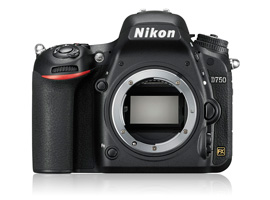
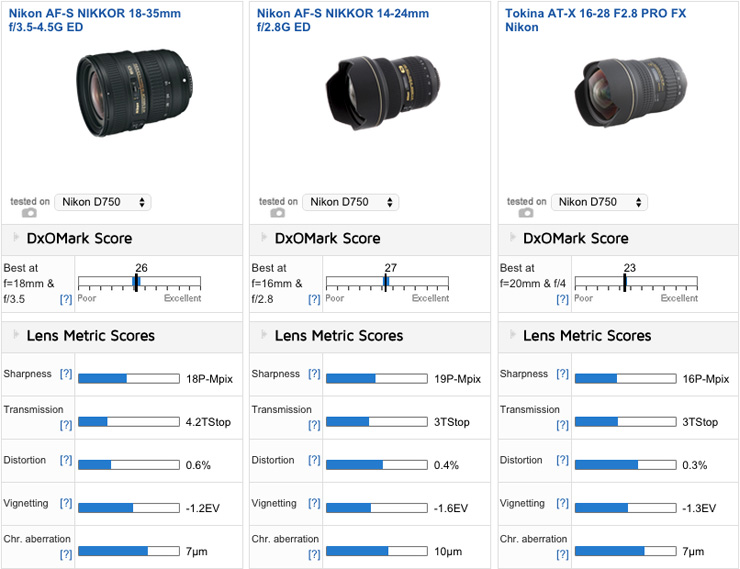
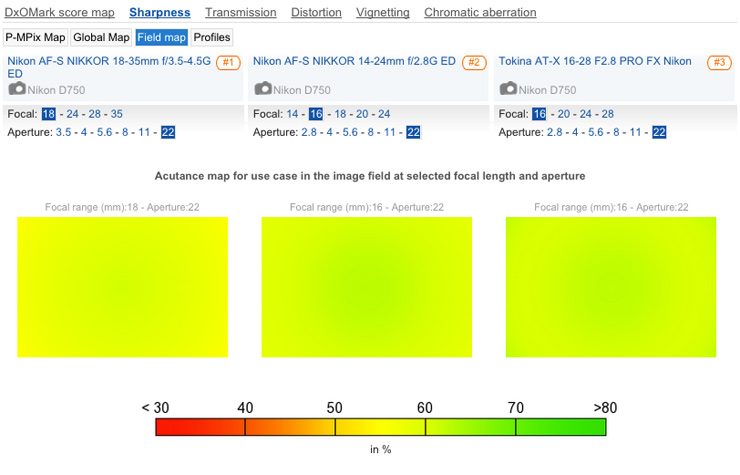
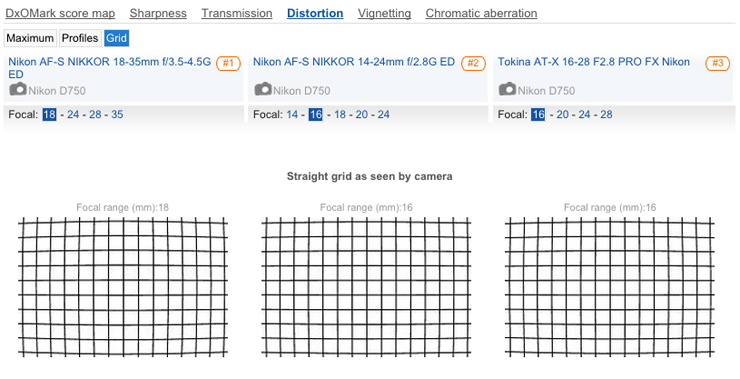
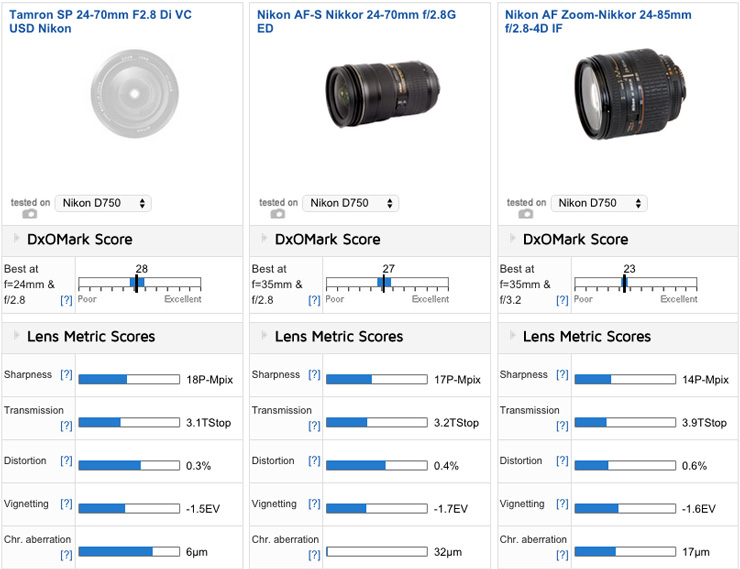
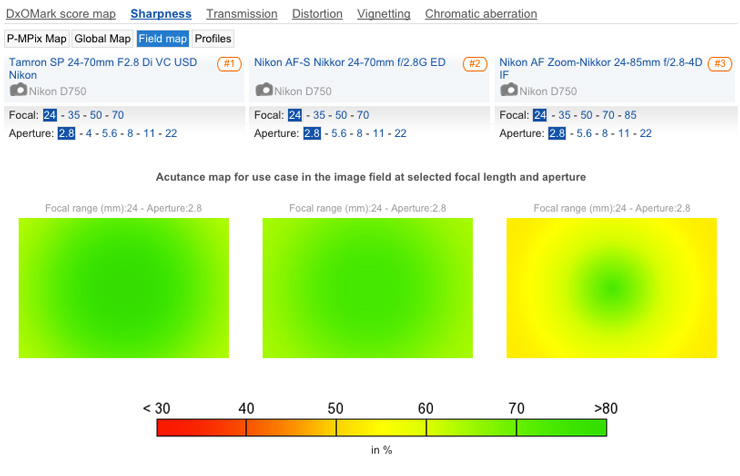
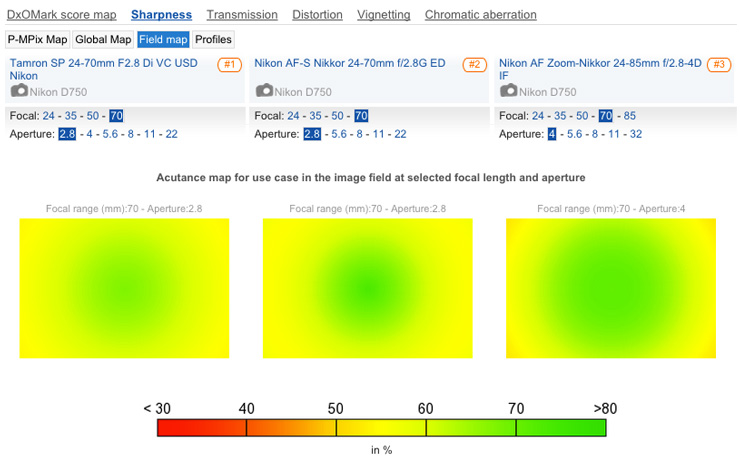
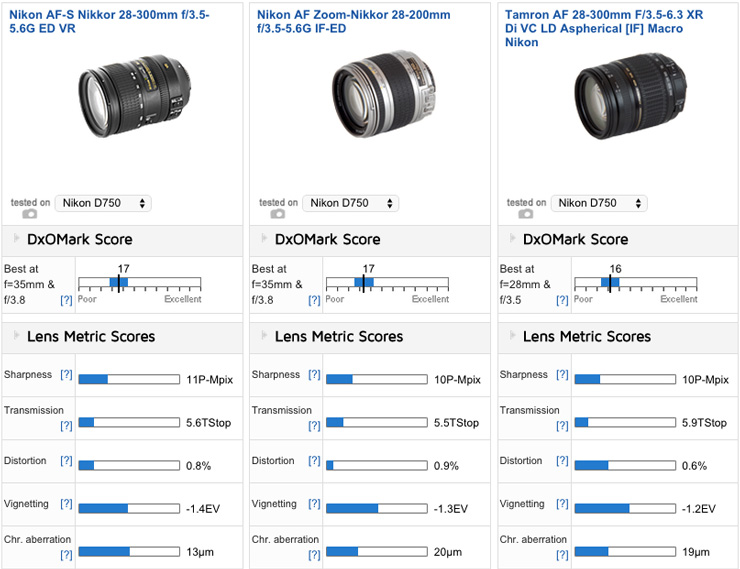
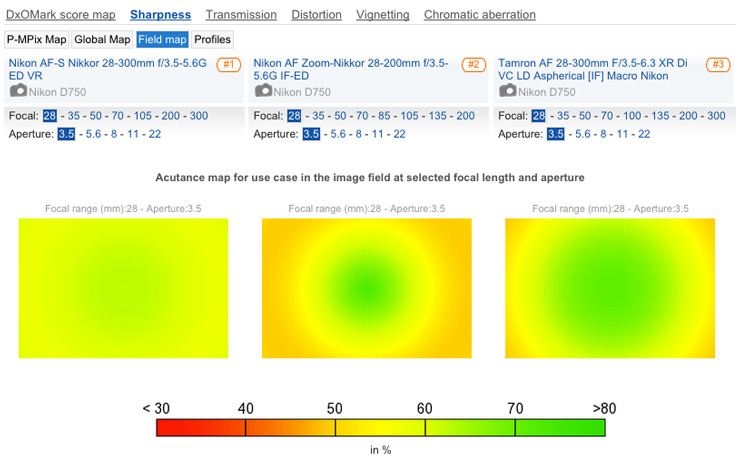
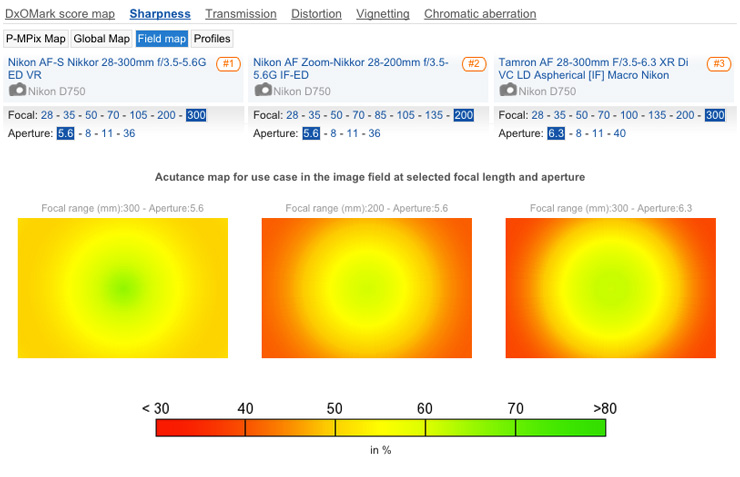
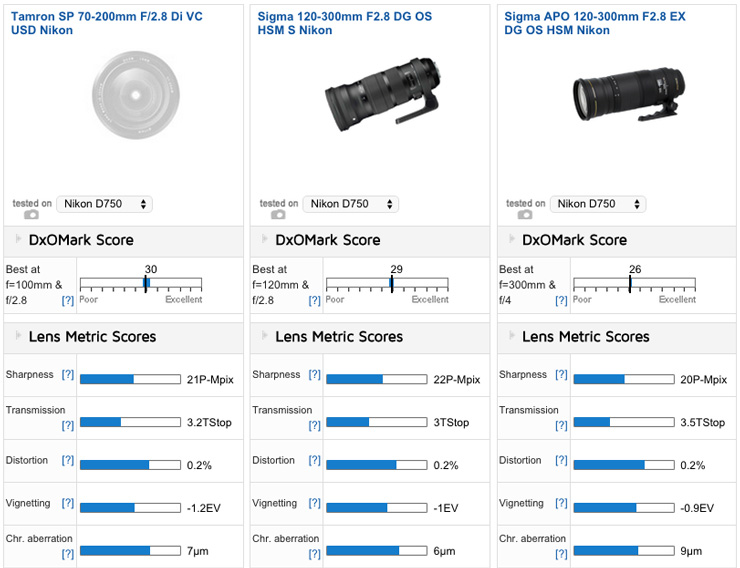
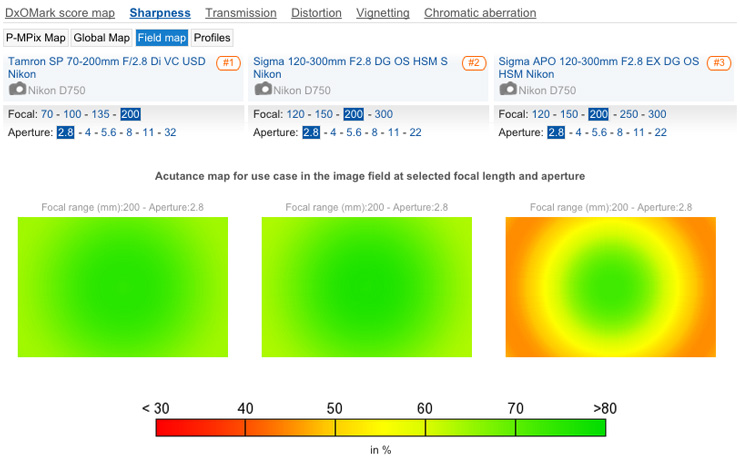
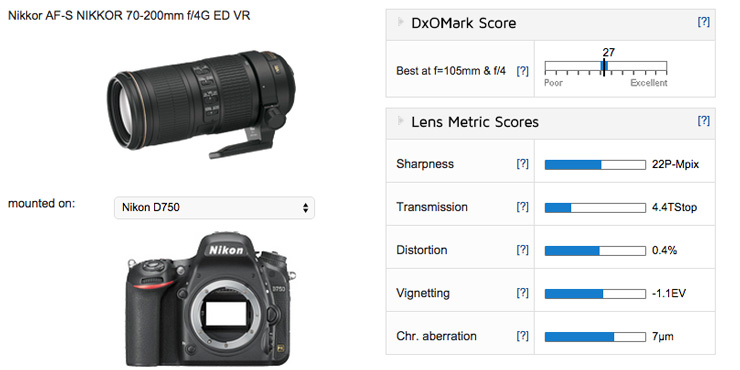
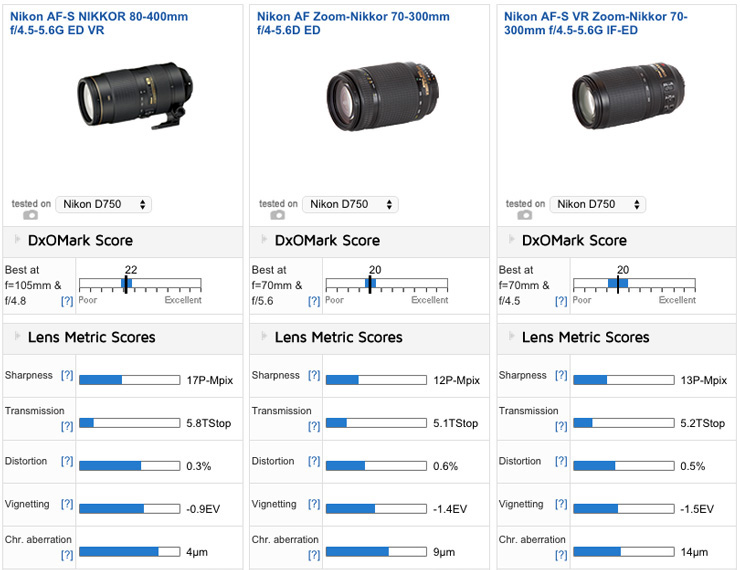
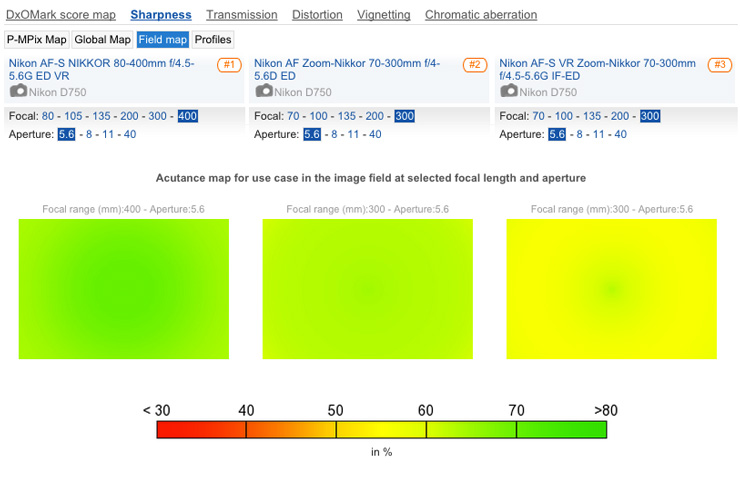
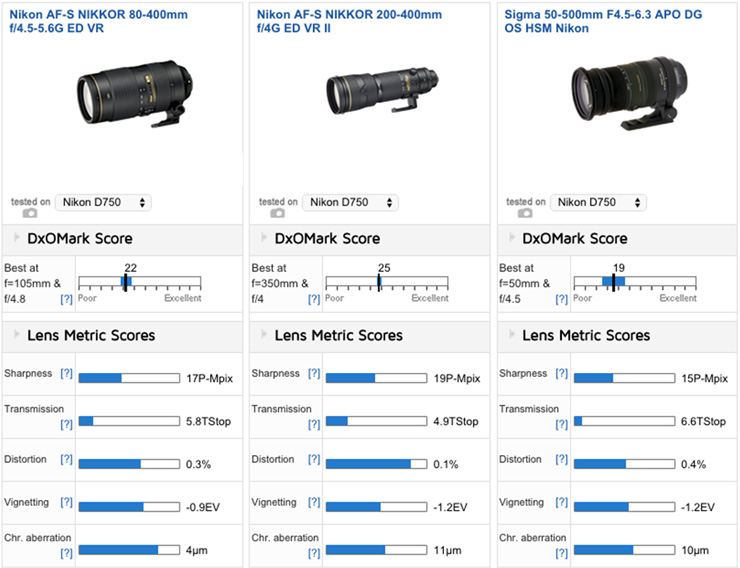
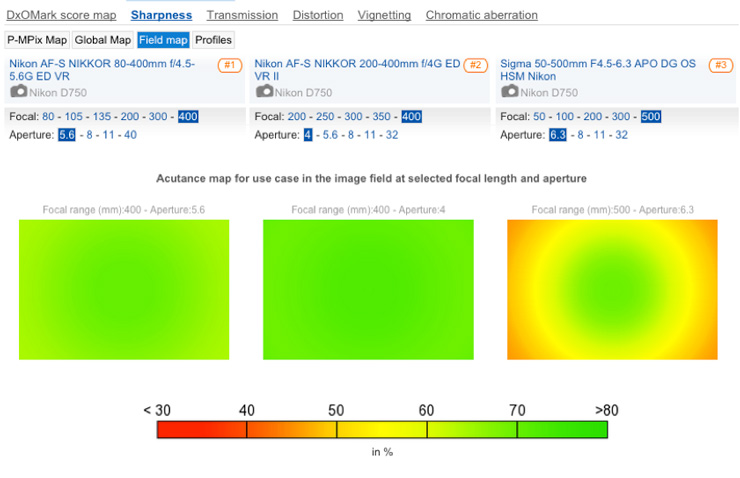
DXOMARK encourages its readers to share comments on the articles. To read or post comments, Disqus cookies are required. Change your Cookies Preferences and read more about our Comment Policy.